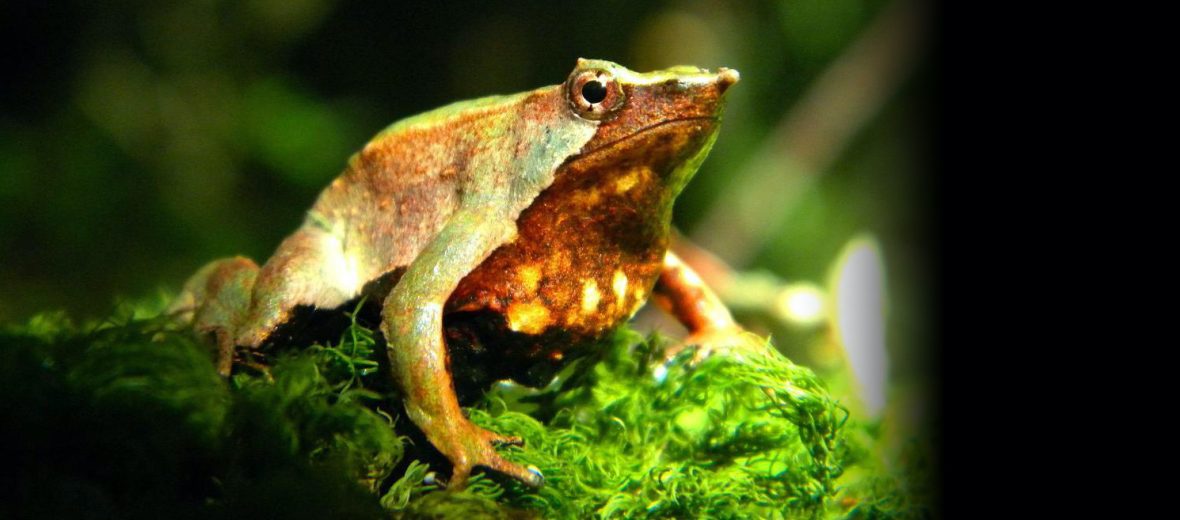
The Darwin’s frog can only be found in Chile and Argentina. They prefer moist, moss covered ground; grasslands; rough wooded debris; and young trees and shrubs in mature native forests, near slower moving streams. These critters live at elevations of up to 3,600 feet. Sadly, due to habitat loss at the hands of agriculture, aquaculture, residential development, commercial development, logging, and fire suppression; pollution; invasive species (and with them disease and predation); volcanoes; and climate change, these amazing and unusual creatures are listed not only as Endangered, but Critically Depleted by the IUCN, as of 2021.
First the Stats…
Scientific name: Rhinoderma darwinii
Weight: Up to .2 ounce
Length: Up to 1.2 inches
Lifespan: Up to 15 years
Now on to the Facts!
1.) Their populations are decreasing each day, pushing them to the brink of extinction.
2.) They are also called the southern Darwin’s frog.
3.) French zoologist André Marie Constant Duméril along with his assistant Gabriel Bibron first described these frogs in 1841.
4.) Charles Darwin first discovered this species in Chile during his voyage on the HMS Beagle.
5.) The populations of these frogs have been severely fragmented and they have a low dispersal ability.
But wait, there’s more on the Darwin’s frog!
6.) They prey on a variety of insects.
7.) When faced with a predator, the Darwin’s frog will either lay still and utilize camouflage to look like a dead leaf. Or, if further pestered, they will also roll over on their back to expose their patterned belly, warning of potential harm if eaten.
Did you know…?
Tadpoles develop inside the vocal sac of the male. Not in water, like many other frogs normally do.
8.) Females lay up to 10 eggs in the leaf litter. As soon as the embryos begin to show movement, the guarding male will scoop them up in his mouth and there they will stay to further develop.
9.) Embryos take up to 4 weeks to begin showing signs of movement. Once ingested, the tadpoles emerge in up to 3 days, but stay in the male’s vocal sac for an additional 6 weeks.
10.) During this process, the male does not eat. So, before the breeding season, the male must consume large amounts of food in preparation for the long weeks of fasting.
But wait, there’s still more on the Darwin’s frog!
11.) Once fully developed, the froglets emerge from dad’s vocal sac and begin life on their own.
12.) Their primary predators are rats, mice, birds, and snakes.
Did you know…?
The deadly disease chytridiomycosis, caused by the Batrachochytrium dendrobatidis fungal infection has also drastically affected their populations.
13.) The skin of these frogs is not poisonous, but they do perform mimicry to pretend they are.
14.) These frogs are diurnal (active during the day).
15.) In an effort to save these amazing amphibians, captive colonies have been established at 2 zoos in Chile, the National Zoo and the Concepción Zoo. This is called ex situ (off site) species propagation.
16.) The future is uncertain for the Darwin’s frog. But scientists are hopeful they can be saved and that their populations will increase, due to the aid of zoologists.
Now a Short Darwin’s Frog Video!
Be sure to share & comment below! Also, check out the Critter Science YouTube channel. Videos added regularly!
Want to suggest a critter for me to write about? Let me know here.



